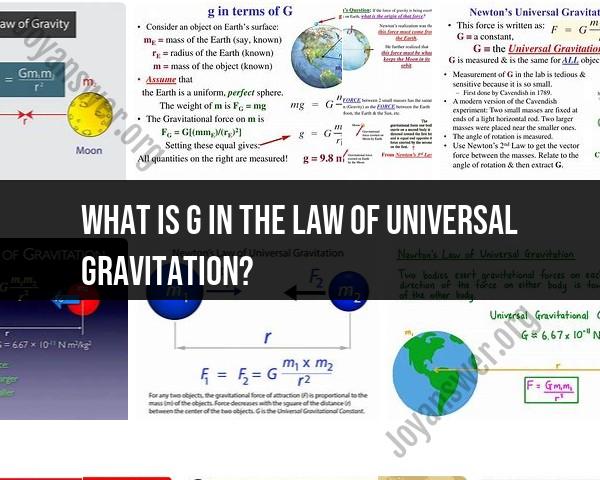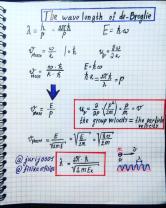What is G in the law of universal gravitation?
In the law of universal gravitation, "G" represents the universal gravitational constant. This constant is a fundamental value in physics and plays a crucial role in determining the strength of the gravitational force between two objects. The law of universal gravitation, formulated by Sir Isaac Newton, states that every object with mass attracts every other object with mass, and the strength of this attraction is directly proportional to the product of their masses and inversely proportional to the square of the distance between them.
Mathematically, the law of universal gravitation is expressed as:
F = (G * m1 * m2) / r^2
Where:
- F is the gravitational force between two objects.
- G is the universal gravitational constant.
- m1 and m2 are the masses of the two objects.
- r is the distance between the centers of the two objects.
The value of "G" is approximately 6.674 × 10^(-11) N·(m/kg)^2 in the International System of Units (SI). It is a constant that is the same throughout the universe and does not change. The gravitational constant is essential in understanding and calculating the gravitational force between objects of different masses and at varying distances from each other. It provides a fundamental basis for describing the gravitational interactions that govern the motion of celestial bodies, such as planets, stars, and galaxies, as well as everyday phenomena on Earth.
What does "G" represent in the law of universal gravitation equation?
"G" in the law of universal gravitation equation represents the gravitational constant. It is a physical constant that is involved in the calculation of gravitational effects. The value of G is 6.67408 × 10−11 m3⋅kg−1⋅s−2.
How is the gravitational constant "G" determined and used in physics?
The gravitational constant G is determined by measuring the force of gravity between two objects of known mass. The first accurate measurement of G was made by Henry Cavendish in 1798. Since then, G has been measured more precisely using a variety of methods.
G is used in physics to calculate the gravitational force between two objects. It is also used to calculate the escape velocity, which is the velocity that an object must have to escape the gravitational pull of another object.
What is the significance of "G" in understanding the force of gravity?
G is significant in understanding the force of gravity because it is the fundamental constant that determines the strength of the gravitational force. The stronger the gravitational force, the greater the value of G.
G is also significant because it is a universal constant. This means that it has the same value throughout the universe. This is important because it allows us to calculate the gravitational force between any two objects, regardless of their location in the universe.
Overall, G is a fundamental constant that is essential to our understanding of the force of gravity.
Here are some additional examples of how G is used in physics:
- G is used to calculate the gravitational force between the Earth and the Moon. This allows us to calculate the Moon's orbit and predict its position in the sky.
- G is used to calculate the gravitational force between the Sun and the planets. This allows us to calculate the orbits of the planets and predict their positions in the solar system.
- G is used to calculate the gravitational force between stars. This allows us to understand how stars form and evolve.
G is a truly remarkable constant, and it is essential to our understanding of the universe.











